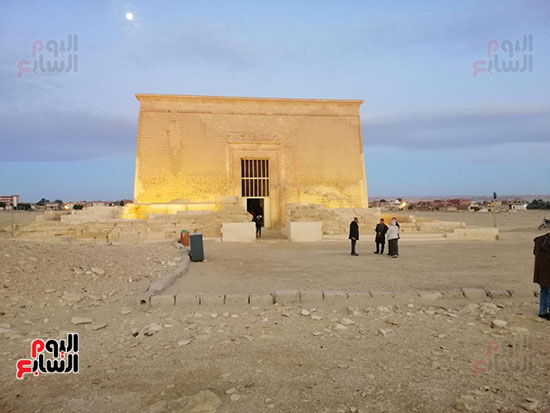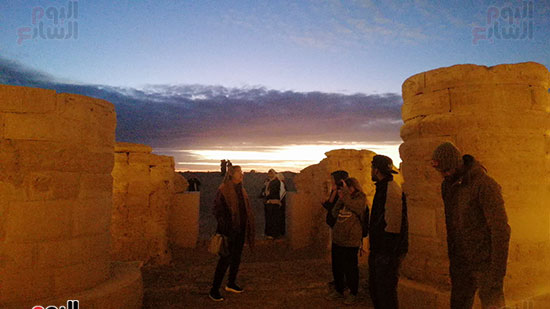CAIRO – 21 December 2021: Egypt’s Fayoum witnessed the annual Solar Alignment Phenomenon, where the sun rays illuminate the shrine of the ancient deity Sobek in Fayoum's Qasr Qaroun Temple.
The phenomenon is repeated annually at the dawn of December 21.
A committee from the Tourism Department in Fayoum Governorate, in cooperation with the Antiquities District in the governorate, monitored in the early hours of Tuesday, the Solar Alignment Phenomenon on the Holy of Holies in Qasr Qaroun Temple.
Fayoum Governorate decided to limit the celebration this year to monitoring and documentation, as part of the precautionary measures taken by the governorate to combat the global pandemic, based on the directives of the Council of Ministers in this regard.

The Solar Alignment in Qasr Qaroun Temple is a unique astronomical-architectural phenomenon, where the sun rays illuminate the temple’s Holy of Holies to mark the beginning of winter in the northern hemisphere.

The Qasr Qaroun Temple is located on the southwestern side of Lake Qarun, and dates back to the Greco-Roman era.

The Fayoum governorate attaches great importance to this event, which also comes within the framework of the permanent efforts to revitalize the tourism movement and introduce the province's tourism, archaeological, cultural and environmental potentials.
Qasr Qaroun Temple is about 65 km from the city of Fayoum and is located southwest of Lake Qaroun within the geographical division in the northwest of Fayoum Province in the Center of Youssef Al-Siddiq. The city is called Dionysius, a city that was built in the Ptolemaic period around the third century BC. It was called Dionysius after the Greek god of wine.

In the middle of the city, a temple of limestone was built for the deity Sobek, the local deity of the Fayoum region.
For his part, Director General of Fayoum Antiquities Sayed Al-Shoura said that the temple has nothing to do with Qaroun mentioned in the Qur’an, as this will be announced with evidence for the first time on December 22.
Al-Shoura further pointed out that the palace was dedicated to the worship of the god Dionysius, the Greek god of wine and love. Some facilities were added to the temple during the Roman era and it acted as a shelter during the Roman persecution of Christians.
The word “palace” came after the Islamic conquest, as the Muslims used to call a temple a palace, so they Luxor Governorate its name because it included many palaces [temples].
Regarding the Solar Alignment Phenomenon on Qasr Qaroun Temple, Al-Shoura confirmed that Magdy Fikry discovered it, and the official celebration of that event began in 2010.
The sun illuminates the temple for 25 minutes, then it seeps through the axis of the temple to light the central compartment of the Holy of Holies, which is supposed to have contained the sacred boat of the god Sobek. Sun rays then veer right and illuminate the right compartment, which contained the statue of the deity, while the left compartment remain drenched in darkness as it contained the mummy of the crocodile god Sobek, which should have been kept in the dark.
Al-Shoura added that the new archaeological discoveries in the governorate contributed to flourishing tourism. Perhaps the most important of these discoveries was the opening of the royal burial chamber in the second Pyramid of Senusret in Lahoun.
Comments
Leave a Comment